Starting in Delaware, you must tour the 48 contiguous United States, visiting each state exactly once.
Where will you finish?
Starting in Delaware, you must tour the 48 contiguous United States, visiting each state exactly once.
Where will you finish?
One afternoon, in mood très gai
Because of paying the gourmet
(I’d taken wine with déjeuner —
A light and lilting Beaujolais —
Plus biscuits, cheese, and pousse-café),
I dared a blazing sun, à pied,
To pay a little visit chez
Miss Janet, who said “You OK?
You may have had a coup de soleil.”
Said I, “I’ve writ a poem, J.,
With no last letter twice in play
And yet the whole thing rhymes with a.”
— Willard R. Espy
(“The trick would, of course, be impossible without using Anglicized French terms.”)
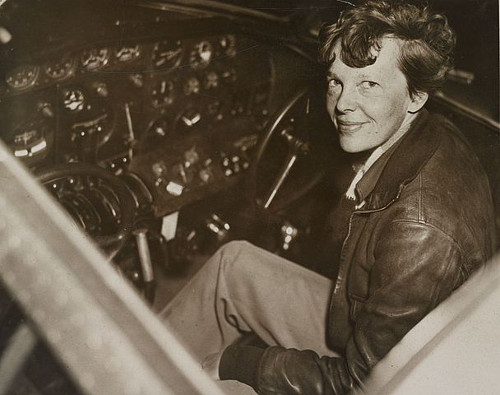
Amelia Earhart left behind what she called “popping off letters,” to be opened in the event of her death. This one, discovered by her husband and biographer, George Putnam, was addressed to her father:
May 20, 1928
Dearest Dad:
Hooray for the last grand adventure! I wish I had won, but it was worth while anyway. You know that.
I have no faith we’ll meet anywhere again, but I wish we might.
Anyway, good-by and good luck to you.
Affectionately, your doter,
Mill
Another, addressed to her mother, read simply, “Even though I have lost, the adventure was worth while. Our family tends to be too secure. My life has really been very happy, and I don’t mind contemplating its end in the midst of it.”

Satirists must make difficult masters. Jonathan Swift spent 28 years amassing grievances about his servants and published them in a sarcastic list in 1731:
Samuel Johnson remarked that Swift must have taken copious notes, “for such a number of particulars could never have been assembled by the power of recollection.”
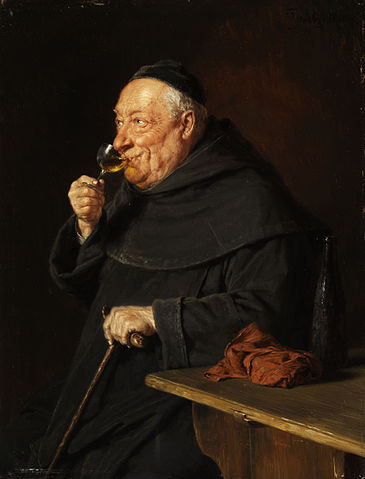
abbey-lubber
n. a monk living in idleness and self-indulgence
During China’s Han dynasty, artisans began casting solid bronze mirrors with a perplexing property. The front of each mirror was a polished, reflective surface, and the back featured a design that had been cast into the bronze. But if light were cast from the mirrored side onto a wall, the design would appear there as if by magic.
The mirrors first came to the attention of the West in the early 19th century, and their secret eluded investigators for 100 years until British physicist William Bragg worked it out in 1932. Each mirror had been cast flat with the design on the reverse side, giving the disk a varying thickness. As the front was polished to produce a convex mirror, the thinner parts of the disk bulged outward slightly. These imperfections are invisible to direct inspection; as Bragg wrote, “Only the magnifying effect of reflection makes them plain.”
Joseph Needham, the historian of ancient Chinese science, calls this “the first step on the road to knowledge about the minute structure of metal surfaces.”
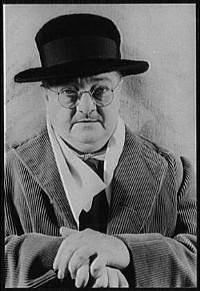
Alexander Woollcott set a world record for the shortest review of a Broadway play.
The play was titled Wham!
Woollcott’s review, in full, read “Ouch!”
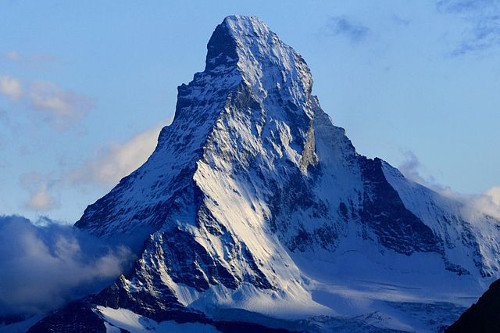
In 1950 newspapers around the world reported that a 10-month-old kitten had climbed the Matterhorn, one of the highest peaks in Europe. In this week’s episode of the Futility Closet podcast we’ll wonder whether even a very determined kitty could accomplish such a feat.
We’ll also marvel at a striking demonstration of dolphin intelligence and puzzle over a perplexed mechanic.
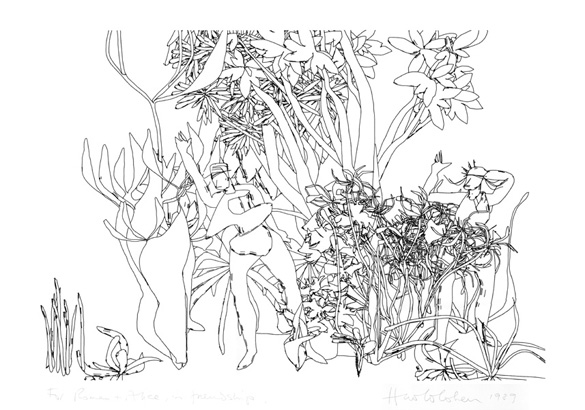
Shortly after joining the faculty of UC San Diego in 1968, British artist Harold Cohen asked, “What are the minimum conditions under which a set of marks functions as an image?” He set out to answer this by writing a computer program that would create original artistic images.
The result, which he dubbed AARON, has been drawing new images since 1973, first still lifes, then people, then full interior scenes with color. These have been exhibited in galleries throughout the world.
Carnegie Mellon philosopher David E. Carrier writes, “A majority of the viewers of AARON’s work find recognizable shapes in it; the drawing above appears to contain human figures. But AARON here used only the twenty or thirty rules it usually uses, with no special reference to human beings. Does knowing this tell us something about the structure of representation?”
Cohen asks, “If what AARON is making is not art, what is it exactly, and in what ways, other than its origin, does it differ from the ‘real thing?’ If it is not thinking, what exactly is it doing?”
“At the risk of stating the obvious, it seems to me that one of the things human beings find interesting about drawings in general is that they are made by other human beings, and here you are watching the image develop as if it is being developed by another human being. … When the drawing is finished, it functions as a human drawing. … A large part of what we value in art is not the ability of the artist to communicate special meanings, but rather the ability of the artist to present the viewer with something that stimulates the viewer’s own propensity to generate meaning.”